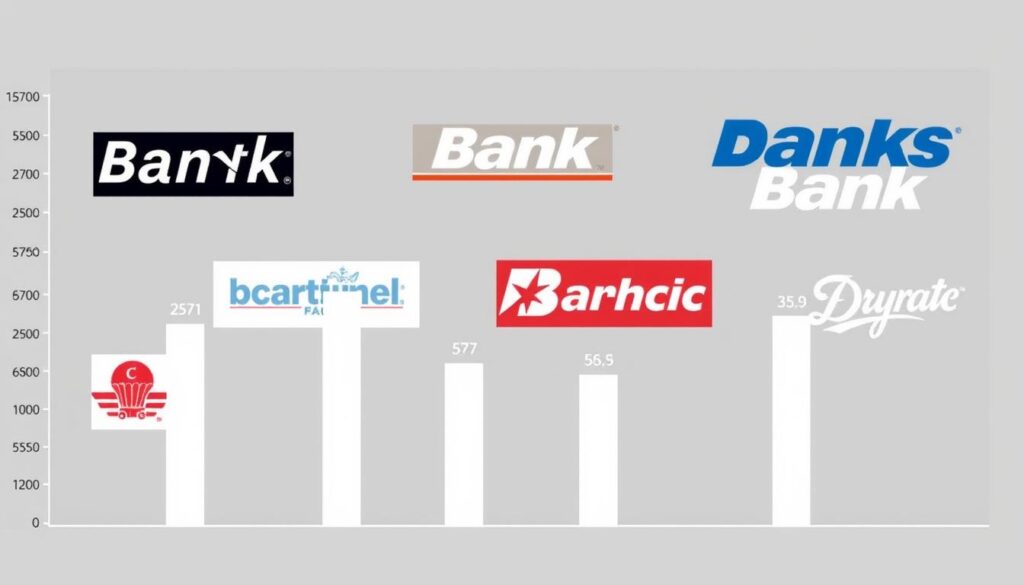Did you know some banks can charge up to $50 for an international wire transfer? There are also Avoid Hidden Fees that can cut down on the money your loved ones get. It’s tough to deal with cross-border payments, but you can dodge these fees and save money.
This guide will give you expert advice and tips to understand and avoid international transfer fees. You’ll learn about the different fees and what affects them. By the end, you’ll know how to send money without losing out to hidden charges.
Key Takeaways
- Understand the different types of fees associated with international money transfers, including sending fees, receiving fees, intermediate bank fees, and currency conversion fees.
- Recognize the impact of the destination country, banking infrastructure, regulatory environment, currency exchange practices, and interbank agreements on transfer costs.
- Discover alternative payment platforms and services that offer more transparent and cost-effective solutions for global money transfers.
- Learn strategies to compare providers, leverage digital currencies, and utilize local currency accounts to reduce your international transfer expenses.
- Evaluate the true cost of bank transfers by considering all hidden fees and charges that can diminish the final amount received by your beneficiary.
Understanding Wire Transfer Fees
Wire transfers are a popular way to send money across borders. But, they come with fees that can add up fast. These fees include sending fees, receiving fees, intermediary bank charges, and currency conversion fees.
Types of Fees Associated with Wire Transfers
The first fee is the sending fee. It’s charged by the bank starting the transfer. Sending fees can be low, around $15 for domestic wires, or high, up to $50 for international wires.
Receiving banks also charge a fee, usually $15 for both domestic and international wires. These are called “incoming wire transfer fees.”
International wire transfers may also face intermediary bank charges. These fees come when a wire goes through several banks before reaching its destination. They can be $15 to $50 each.
Currency conversion fees are another cost for international wires. These happen when you exchange one currency for another. They can be as high as 3-5% of the total amount.
| Fee Type | Average Fee Range |
|---|---|
| Incoming Domestic Wire Transfer | $15 |
| Incoming International Wire Transfer | $15 |
| Outgoing Domestic Wire Transfer | $25 – $30 |
| Outgoing International Wire Transfer | $45 – $50 |
| Currency Conversion Fee | 3% – 5% of transfer amount |
Knowing about wire transfer fees is key when sending money abroad. These fees can greatly affect the cost of your transfer. Being aware helps you plan better and maybe even cut down on fees.

Factors Affecting International Transfer Fees
International money transfer fees can change a lot, based on several important factors. Knowing how the destination country, banking setup, rules, currency exchange, and bank agreements affect costs is key. This knowledge helps in cutting down expenses when sending money across borders.
Impact of Destination Country
The fees for sending money abroad often depend on the destination’s economy and banking setup. Places with less developed banking systems or limited financial access might charge more for sending money. The rules in the destination country, like currency controls and anti-money laundering laws, can also make transfer fees go up.
Banking Infrastructure
The quality and reach of a country’s banking system are big factors in international transfer fees. Countries with strong digital banking, many branches, and efficient payment systems usually offer lower wire transfer rates. The number of banking connections can also affect the cost of sending money abroad.
Regulatory Environment
The rules for sending money across borders in the destination country can greatly affect fees. Tough rules on anti-money laundering and know-your-customer (KYC) can make banks’ work harder and more expensive. This might mean higher fees for customers.
Currency Exchange Practices
How banks and transfer services exchange currencies can greatly affect the cost of sending money abroad. They might use less favorable exchange rates, which can increase fees. Knowing the real mid-market rate and comparing it with what’s offered can help spot potential exchange costs.
Interbank Agreements
Agreements between banks can also change international transfer fees. Banks with strong connections or in global payment networks might offer better rates. This is because they can use their size and efficient processes to save money.

By looking at these factors, people and businesses can pick the best options for sending money abroad. This can help save money.
Comparing Bank Transfer Fees
International wire transfers have different fees at various banks. By looking at fees from top U.S. banks, you can see the usual costs. This helps you find the best deals for sending money abroad.
The average fee for a domestic wire transfer coming in is $15. For an international wire transfer coming in, it’s also $15. But sending money out costs more. Domestic transfers cost about $30 on average, and international ones cost $45.
| Bank | Outgoing Domestic Wire Transfer | Outgoing International Wire Transfer |
|---|---|---|
| Bank of America | $30 | $45 |
| Wells Fargo | $30 | $45 |
| Chase Bank | $25 (online), $30 (agent-assisted) | $40 |
| USAA | $0 (incoming), $45 (outgoing) | $45 |
| PNC | $25 (online), $30 (agent-assisted) | $40 – $45 |
| Capital One | $30 | $40 |
| US Bank | $30 | $50 |
| Citibank | $25 | $35 |
| TD Bank | $30 | $50 |
| Truist | $30 | $65 |
Banks usually charge more than online services for transfers. They might also use higher exchange rates, which can cost you more. Also, bank transfers can take days, which might not be good for urgent needs. Knowing the fees at different banks helps you choose the best way to send money abroad.

Avoid Hidden Fees in International Money Transfers
International money transfers can be tricky, especially when you want to dodge hidden fees. But, there are ways to cut down the cost of sending money across borders.
Using Third-Party Services
Using third-party services like digital remittance platforms can help you avoid hidden fees. These services usually have clear prices, good exchange rates, and lower fees than banks.
Choosing Local Currency for Transfers
It’s smart to choose the recipient’s local currency when sending money abroad. This way, you skip the extra fees from currency conversion. So, the full amount gets to your recipient without any extra cuts.
Understanding Bank Partnerships
Knowing about your bank’s international partnerships and fees is key to reducing international wire fees. Some banks have special deals or lower fees for transfers within their network. So, it’s good to check these deals before sending money abroad.
Use Digital Dollars
Digital currencies like stablecoins are a new way to facilitate low-cost cross-border payments. They offer quick, clear, and cheaper ways to send money abroad. This makes them a great choice for international money transfers.
By using these tips, you can send money abroad with ease. You’ll make sure your money gets to where it needs to go without hidden fees.
Introducing Mural’s Fee-Minimizing Solution
Mural has changed the game in international money transfers. It tackles the long-standing problem of hidden fees head-on. This platform makes the process clear and ensures users know what they’re paying for.
No More Hidden Fees
Mural aims to cut through the confusion of hidden charges. It uses stablecoins to offer a clear, cost-effective way to send money abroad. This means you won’t worry about unexpected fees.
Fair and Transparent Exchange Rates
Mural believes in fair and clear exchange rates. It doesn’t hide behind complex fees like banks do. With Mural, you always know the value of your money when sending it across borders.
Simplified Transactions
Mural makes sending money abroad simple. It cuts out the usual complexities and fees of traditional wire transfers. This lets you send money with ease, knowing it’s done right.
See how Mural’s solution can change your international money transfers for the better.
Strategies to Reduce International Transfer Costs
When you send money across borders, you can cut costs with a few smart moves. Compare providers, use digital currencies, and open local currency accounts. These steps can greatly lower the fees and costs of sending money abroad.
Compare Providers
Not every money transfer service is the same. Spend time looking at fees, exchange rates, and costs from different services. Some banks charge high fees, but some transfer companies offer better rates and clear prices. By checking out your options, you can find the best deal for your needs.
Leverage Digital Currencies
Digital currencies like stablecoins are changing how we send money abroad. They let you skip traditional banks and their high fees. Stablecoins are tied to real currencies, making them a cheaper and more stable choice for sending money, especially when compared to wire transfers or currency exchanges.
Utilize Local Currency Accounts
Opening local currency accounts in the countries you often send money to can cut costs. Keeping money in the local currency means you avoid extra fees and exchange rate charges. This is especially useful for businesses or people who send money regularly abroad, as it makes the process cheaper and simpler.
Using these strategies – comparing services, choosing digital currencies, and using local accounts – can really lower the costs of sending money abroad. This means you keep more of your money where it’s needed.
Evaluating the True Cost of Bank Transfers
When you send money across borders, the cost is more than just the fees upfront. Exchange rate markups and intermediary bank fees can make the total cost much higher. It’s key to look at the full cost of bank-to-bank wire transfers to save money and get the best deal.
Looking at the full expense of cross-border payments means seeing all the hidden costs. Banks often add extra fees that can quickly increase the cost of sending money abroad. These hidden costs include:
- Exchange rate markups: Banks might give a bad exchange rate, making your transfer more expensive.
- Intermediary bank fees: When your transfer goes through several banks, each one might charge a fee, raising the total cost.
- Receiving fees: The bank on the other end might also charge a fee for getting your wire transfer.
By evaluating the true cost of bank wire transfers, you can make smart choices and avoid surprise fees. This detailed look can help you save money and make sure you’re getting a good deal for your international payments.
“The true cost of international money transfers extends far beyond the upfront fees. Hidden charges can add up quickly, significantly impacting the overall value of your transactions.”
When understanding the full expense of bank-to-bank cross-border payments, think about all the fees and charges. By analyzing these, you can make better decisions and improve your international money transfer strategy.
Avoid Hidden Fees in International Money Transfers
International money transfers can be tricky, with hidden fees waiting to catch you off guard. But, by learning how to cut costs, you can make sure your money gets where it needs to go without losing out to fees.
One way to dodge hidden charges is to look into the fees for wire transfers. Research shows that fees can be anywhere from USD 20 to USD 50. Banks also add FX Markups, taking 2% to 6% off the real exchange rate, making your transfer even pricier.
To dodge these fees, think about using services that are upfront about their costs. Many banks add a 2-6% FX Markup on exchange rates for international transfers. Choosing a service that offers fair rates means your money goes further.
Using digital currencies can also cut down the cost of sending money abroad. Banks usually charge between $30 and $50 for international wire transfers. Blockchain-based solutions let you skip the bank and save a lot on fees.
Also, consider opening a local currency account in the country you’re sending money to. In the Eurozone, transfers are often around €5-€7, plus a small percentage of the amount you’re sending. Skipping currency conversion can save you even more on your transfers.
With these tips, you can handle international money transfers with confidence. You’ll keep costs down, avoid hidden fees, and make the most of your money.
Conclusion
When you’re moving money across borders, it’s key to do it without losing a lot to fees. Knowing about wire transfer fees, what affects them, and how to reduce them helps you manage your money better. This way, your money gets to where it needs to go without getting eaten up by hidden fees.
To dodge hidden fees, use digital ways to send money, open local currency accounts, and compare different services. With peer-to-peer payments, remittance services, and digital currencies, you can cut down on bank fees and currency conversion costs. This means more money for your loved ones.
The push for clearer and cheaper global money transfers is ongoing. It involves both regulators and banks working together. By supporting these efforts and making smart choices, you can handle sending money abroad with ease. This ensures your hard-earned cash reaches its destination without losing out to fees.
FAQ
What are the different types of fees associated with wire transfers?
Wire transfer fees include sending fees from the bank you’re using, receiving fees from the bank on the other end, and fees for banks in between. There are also fees for changing currencies.
How do the destination country and other factors impact international transfer fees?
The cost of sending money abroad depends on the country’s banking setup, rules, currency exchange, and bank agreements. These things affect the total cost of sending money across borders.
How can I compare the wire transfer fees charged by different banks?
Look at the fees from top US banks to understand the usual costs. This helps you find the best deals for sending money abroad.
What strategies can I use to avoid hidden fees when sending money internationally?
Use third-party services, send money in the local currency, know your bank’s international fees, and consider digital currencies. These steps can lower the cost of sending money abroad.
How does Mural’s solution address the issue of hidden fees in international money transfers?
Mural simplifies sending money abroad by removing hidden fees. It offers clear exchange rates and makes sending money easier, making it cheaper than before.
What other strategies can I use to reduce the costs associated with international money transfers?
Compare services, use digital currencies, and open local currency accounts. These steps can help you save money on sending money abroad.
How can I evaluate the true cost of bank-to-bank wire transfers?
Look at the total cost of wire transfers, including hidden fees like exchange rate markups and fees from other banks. This helps you find ways to save money and get the best deal for sending money abroad.



